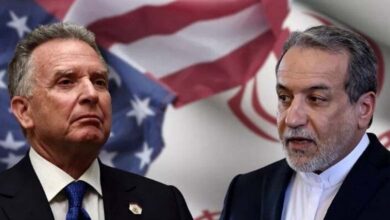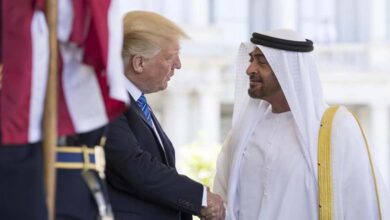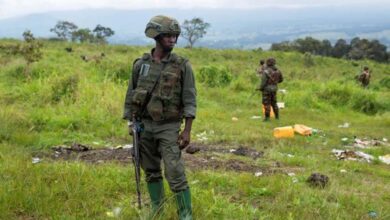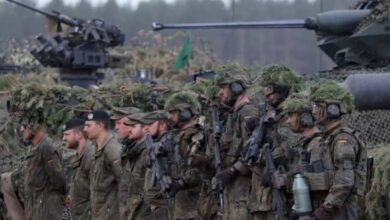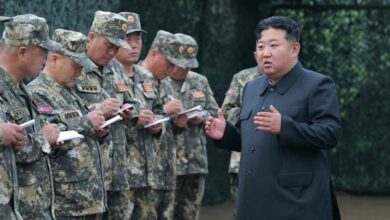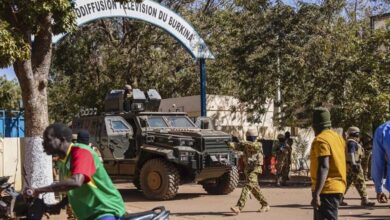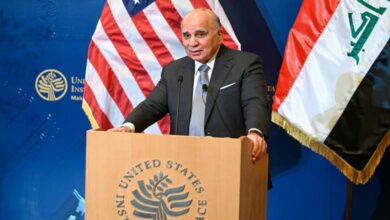The Muslim Brotherhood and June 30: A Divided Diaspora and a Movement in Clinical Death

From a group that thrived in chaos to an entity now seeking shelter—this is the current state of the Muslim Brotherhood, twelve years after its fall in Egypt.
Twelve years have passed since the June 30 Revolution uprooted the Brotherhood’s structure and shattered its decades-long dream of dominance.
-
What is the Relationship between the Founding of the Muslim Brotherhood in Egypt, Iraq, Syria, and the Greater Israel Project?
-
Media Recalls the Crimes of the Muslim Brotherhood and Their Attempt to “Burn Egypt”
This fall was not merely political—it was organizational and popular. The group’s members became scattered and disoriented, both within Egypt and abroad, and the long-held belief in a “safe haven” as a fallback option after every defeat has eroded.
As the anniversary of the revolution approaches, the Brotherhood appears to be shrinking abroad, gradually losing its refuge in host countries. It is now reaping the consequences of the hatred and violence it once promoted, leading to the decline of its media influence and a dwindling audience—so much so that some of its media platforms have become a burden on their financiers.
-
An Expert Reveals the Plans and Names of Muslim Brotherhood Centers Targeting the Region and Egypt
-
The Muslim Brotherhood and Lies: The group promotes old videos to deceive Egyptian public opinion
Fragmentation and Infighting
After the revolution, attention shifted to the Brotherhood’s diaspora networks, while the domestic branch faded under heavy security pressure and the prosecution of its members, many of whom are listed as terrorists.
However, exile soon brought to light a deep rift within the movement, seen most clearly in the recent infighting between two rival factions—those based in London and Istanbul. Each side sought to gain the support of the remaining Brotherhood members in Egypt and to claim leadership of the organization, furthering its fragmentation.
-
“Year of Lies and Blood”: Major Terrorist Crimes Committed by the Muslim Brotherhood in Egypt
-
Rumors of the Muslim Brotherhood Reach Raba’a and Nahda… Egypt Denies
In late 2020, a major dispute erupted between Secretary-General Mahmoud Hussein and acting Supreme Guide Ibrahim Munir, following the arrest of former interim guide Mahmoud Ezzat.
This conflict led to a formal split between the London faction, led by Salah Abdel Haq, and the Istanbul faction, headed by Mahmoud Hussein. These divisions have weakened the internal structure, making organizational management nearly impossible amid intense security crackdowns.
Since 2017, the Brotherhood’s domestic branch has avoided the spotlight, while the leadership abroad deliberately refrained from referencing it. However, both the London and Istanbul factions have recently sought to revive the internal structure, seeing its support as critical to their own legitimacy, given its historical and organizational weight.
-
Did the Muslim Brotherhood aim to destroy the Egyptian identity? Details
-
Lies and Allegations: The Muslim Brotherhood Exploits the Palestinian Issue to Undermine Egypt’s Image
Tightening the Noose Abroad
Outside Egypt, Brotherhood members are facing increasing restrictions. Egyptian diplomatic and political efforts have helped tighten the group’s presence in many host countries.
It has become common for Brotherhood members to report difficulties in renewing residency or having their citizenship revoked—clear signs that host countries are turning away from the organization, which is now so weakened it can no longer even support its own members.
-
The “Hasm” movement of the Muslim Brotherhood aimed to overthrow the ruling regime in Egypt… How?
-
From the Middle Leadership of the Muslim Brotherhood… Harsh Sentences Against a Brotherhood Cell Aimed at Striking the Egyptian Economy
Between Clinical Death and Lingering Efforts
Although the Brotherhood’s internal structure is essentially in a state of clinical death, it continues to maintain minimal operations, primarily focused on supporting members’ families.
Communication between internal and external branches is maintained through secure channels used to transmit organizational instructions. Mahmoud Hussein, representing the Istanbul faction, controls the main channel of communication.
Meanwhile, the London faction succeeded in establishing contact with several domestic cadres during Ibrahim Munir’s tenure, later deciding to sever ties with the internal branch by forming a new General Shura Council and separating administrative responsibilities. As a result, the London-based Brotherhood now operates independently of the organization inside Egypt.
-
The Muslim Brotherhood’s crimes “will not be forgotten” … Egypt thwarts the group’s plans to sell Sinai
-
Egypt’s Muslim Brotherhood decided to confront the police and any opponent… a confession exposes the group’s plots
-
Egyptian Researcher: The Muslim Brotherhood Sanctify the Writings of Hassan el-Banna and Cannot Review Them


